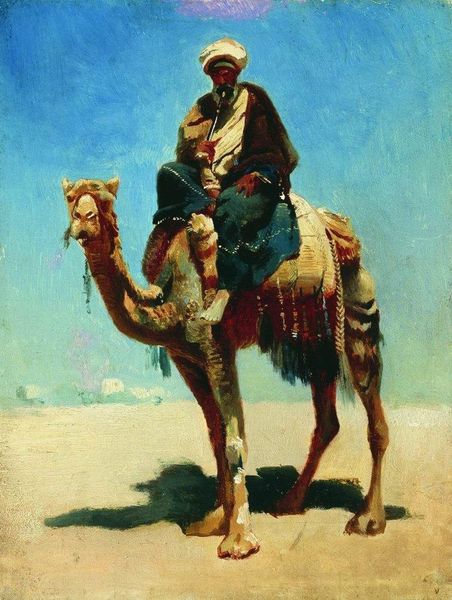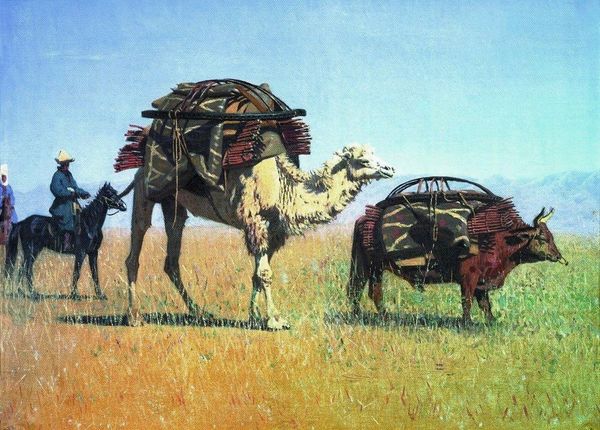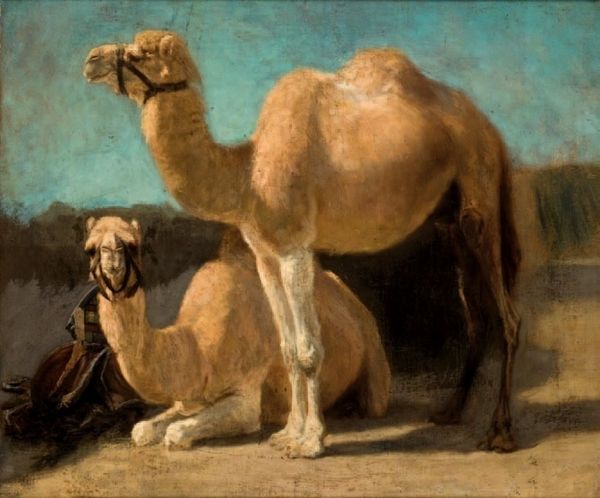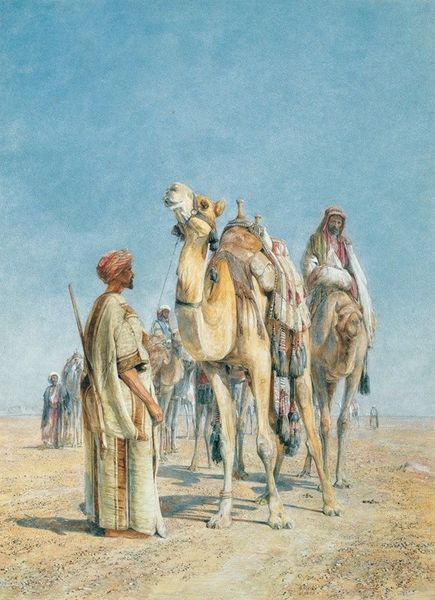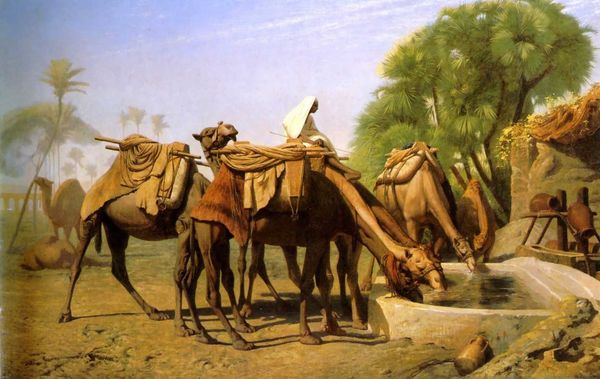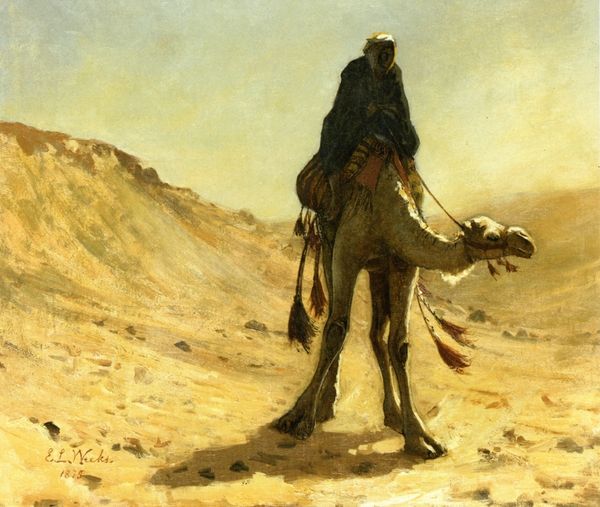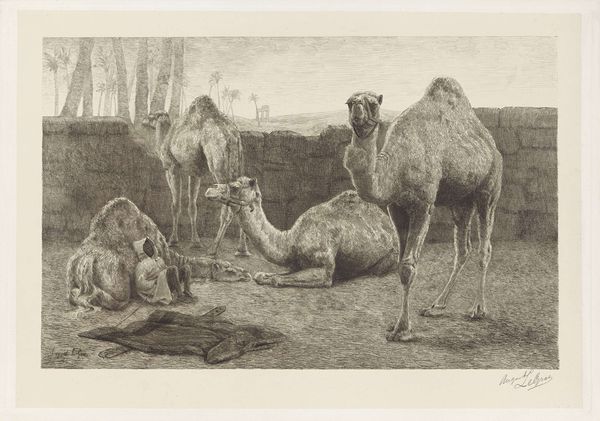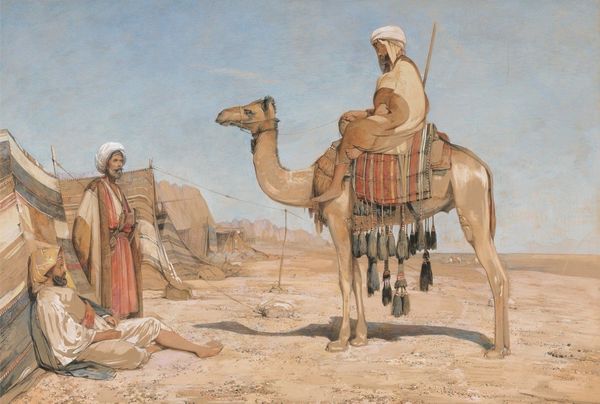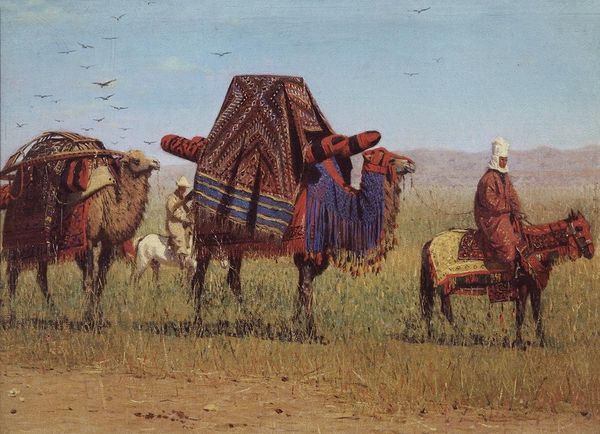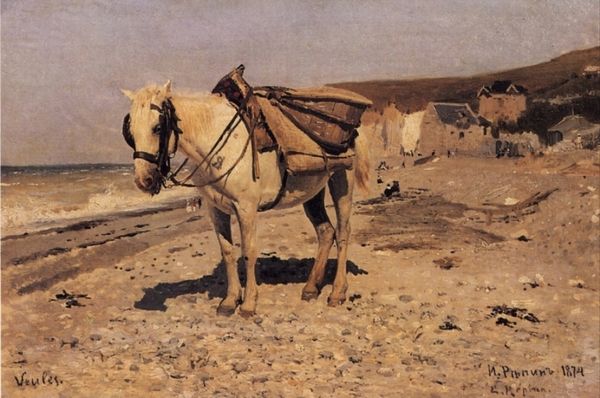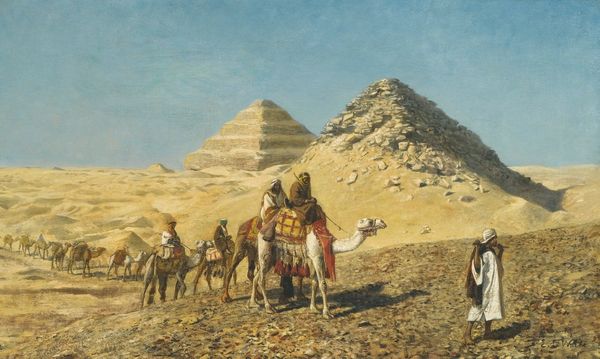
painting, oil-paint
#
animal
#
painting
#
oil-paint
#
landscape
#
oil painting
#
islamic-art
#
genre-painting
#
realism
#
building
Copyright: Public domain
Curator: Immediately, the starkness of the palette grabs my attention. That dry, almost bleached light. Editor: And we’re looking at “Camel in the Courtyard of a Caravanserai,” painted by Vasily Vereshchagin around 1870 using oil paint. It's a striking image that encapsulates the artist's keen interest in the Orient. Curator: Indeed. This is far more than just a representational picture of a desert animal and its keeper. Notice how the central camel—laden, monumental— dominates the scene? Its very presence conveys the symbolic weight of burden and resilience. Editor: Structurally, it's interesting how the architecture mirrors the animal’s posture. The low horizontal lines of the building, punctuated by the shadowed doorway, almost echo the camel's steady stance. Curator: And observe the almost human quality Vereshchagin grants to the animal’s face. He’s turned a beast of burden into an allegorical figure; it becomes almost an emblem for human endurance in difficult conditions. Editor: Yet I feel that is less successful than the surface qualities of the composition itself. Consider how Vereshchagin’s precise rendering of texture -- from the rough coat of the animal to the parched earth -- serves as a narrative element in itself. He translates touch into a visual language. Curator: Of course, one can also not ignore that the courtyard is part of the caravanserai—the resting place for travelers along ancient routes such as the Silk Road. This setting underscores the camel’s role in the exchange of goods, ideas, and cultures across continents. Its presence represents centuries of nomadic existence and transcultural journeys. Editor: Fair enough, but isn't the most powerful element that striking foreground: that unadorned space that pulls us into this timeless moment? Curator: Perhaps. But in truth, I keep seeing a bridge between worlds, both practical and allegorical. The piece echoes in my mind as a representation of interconnected histories. Editor: A fascinating perspective. And for me, that carefully calculated composition keeps my eyes moving—ever engaged by form, texture, and light.
Comments
No comments
Be the first to comment and join the conversation on the ultimate creative platform.
